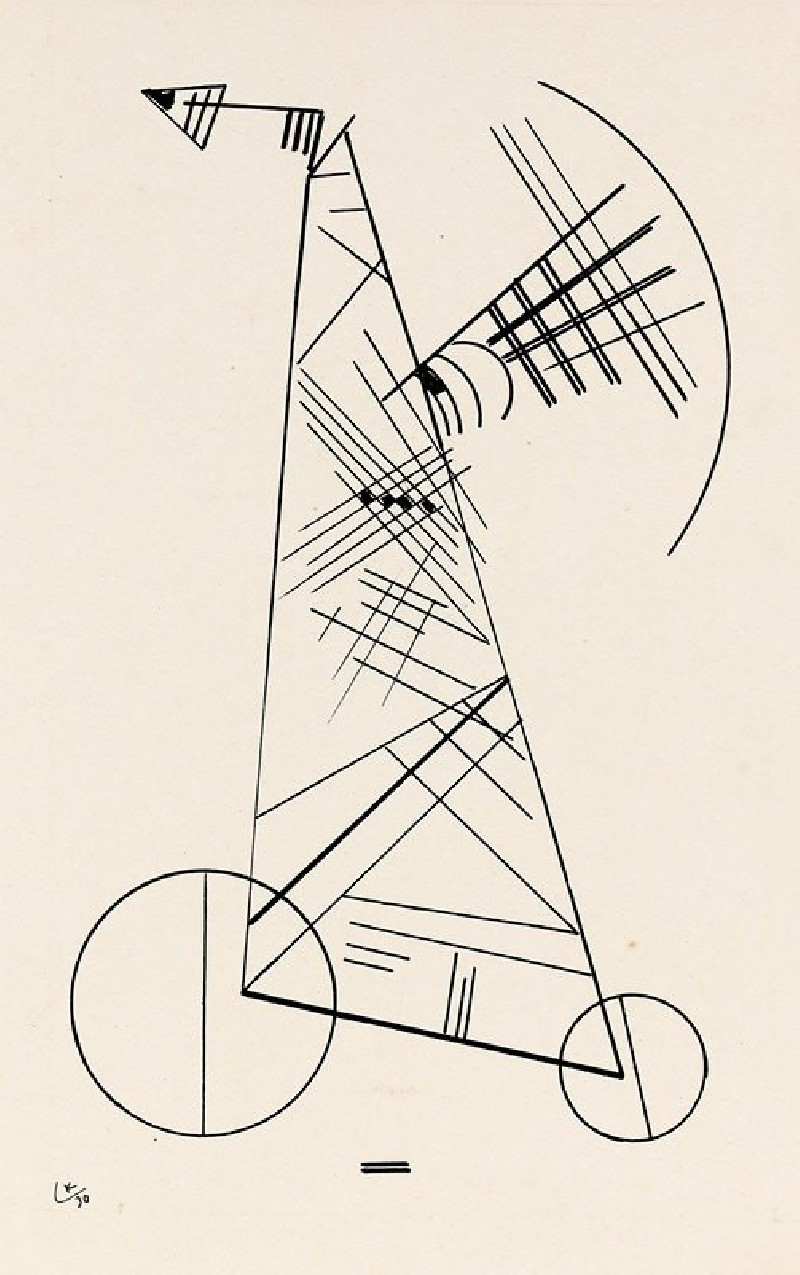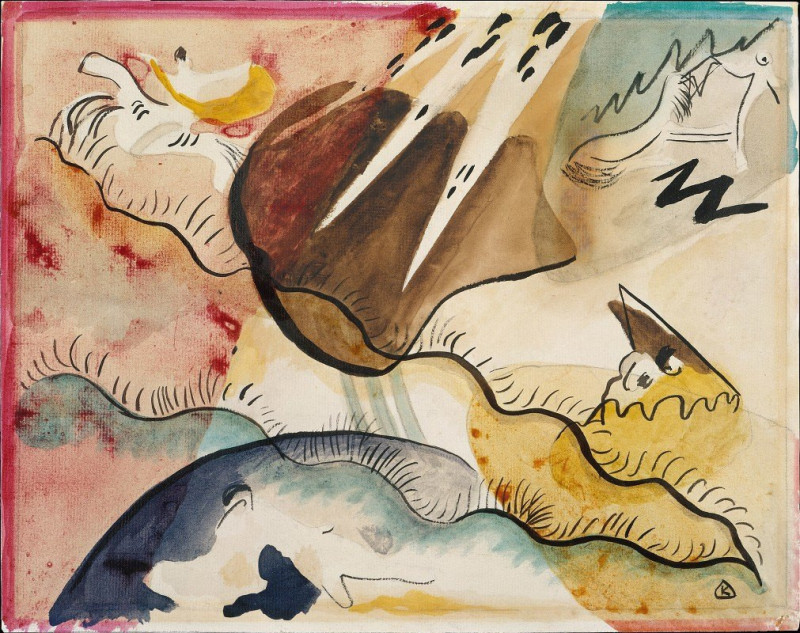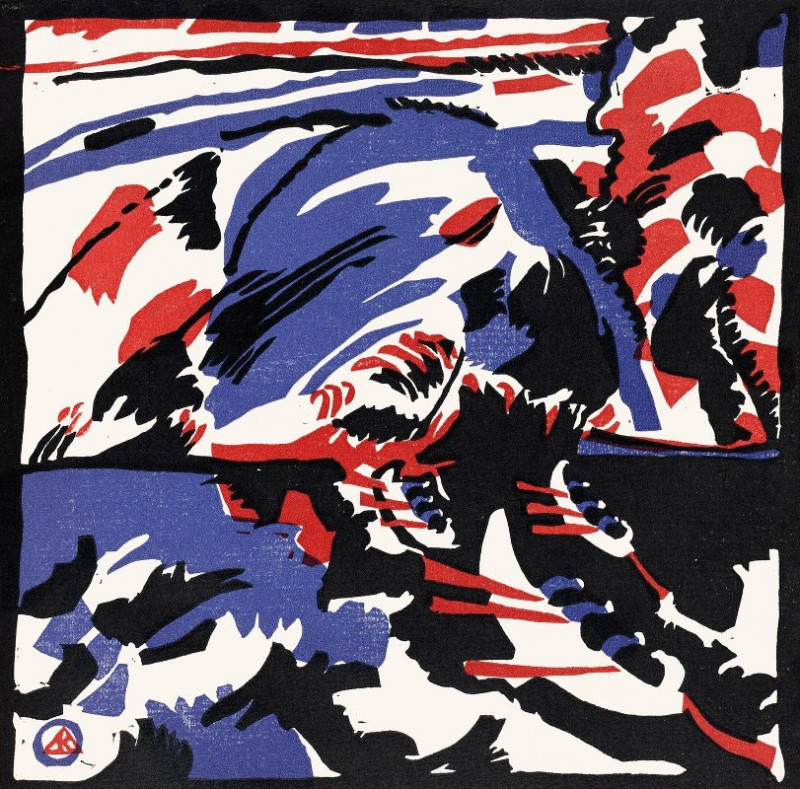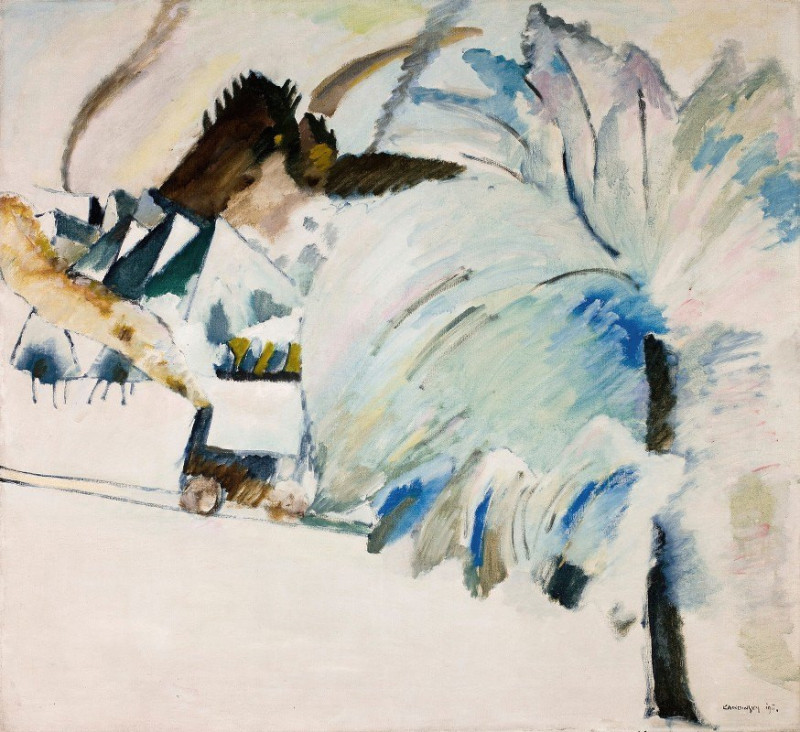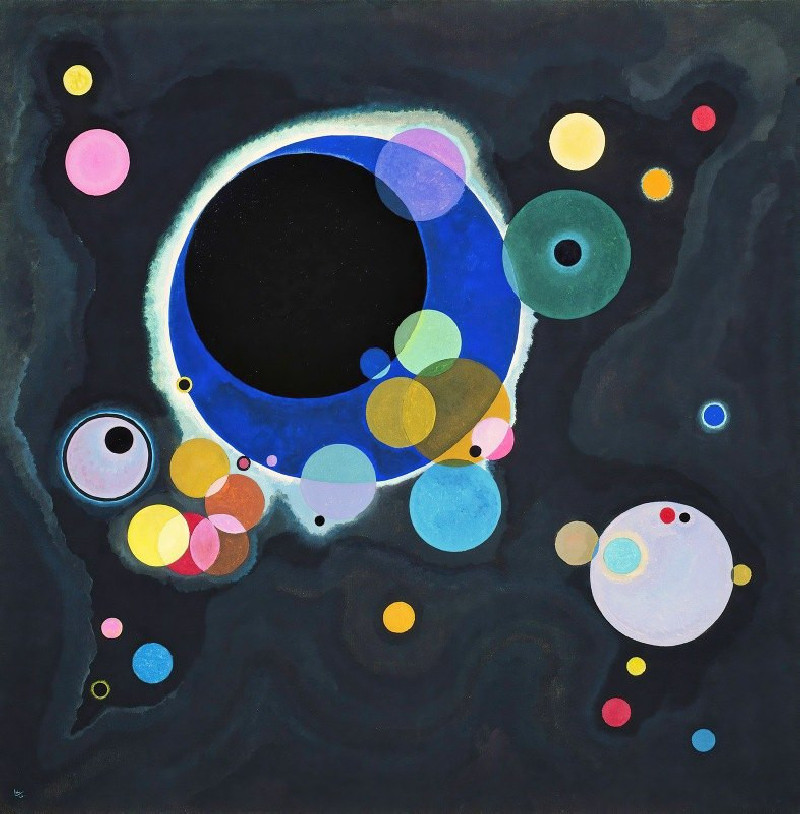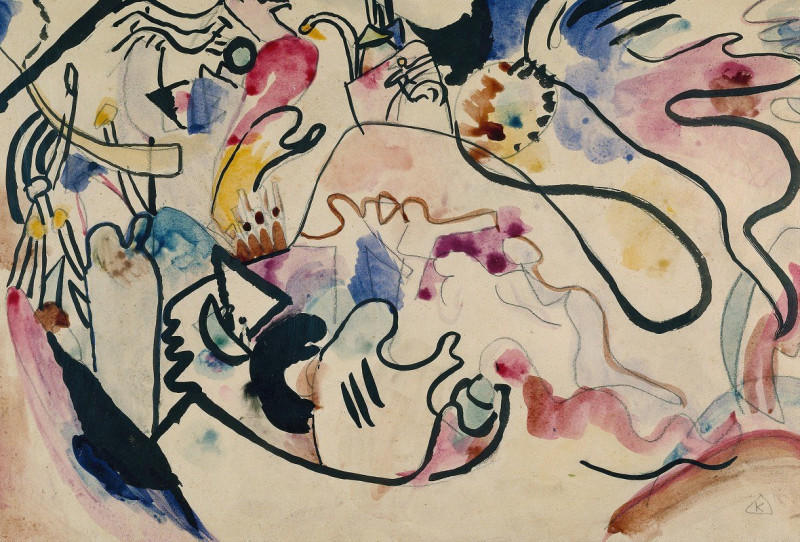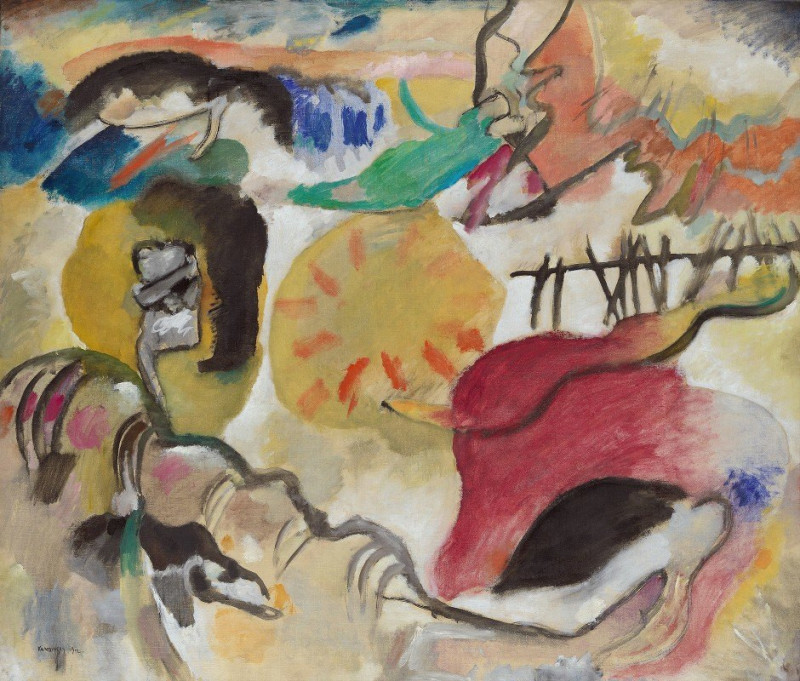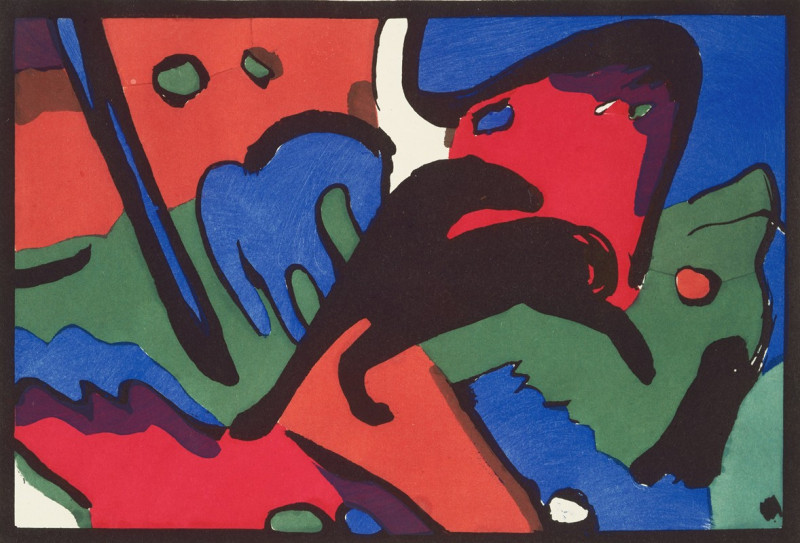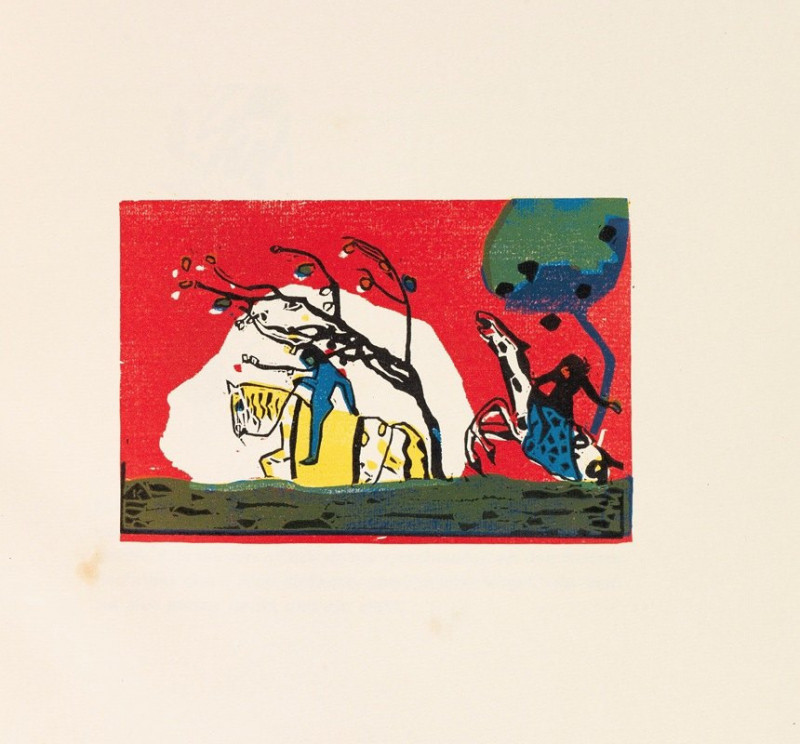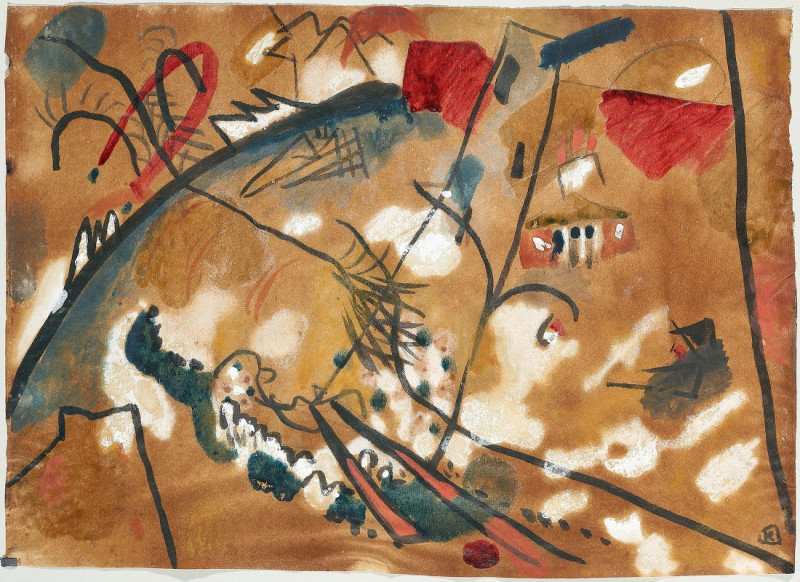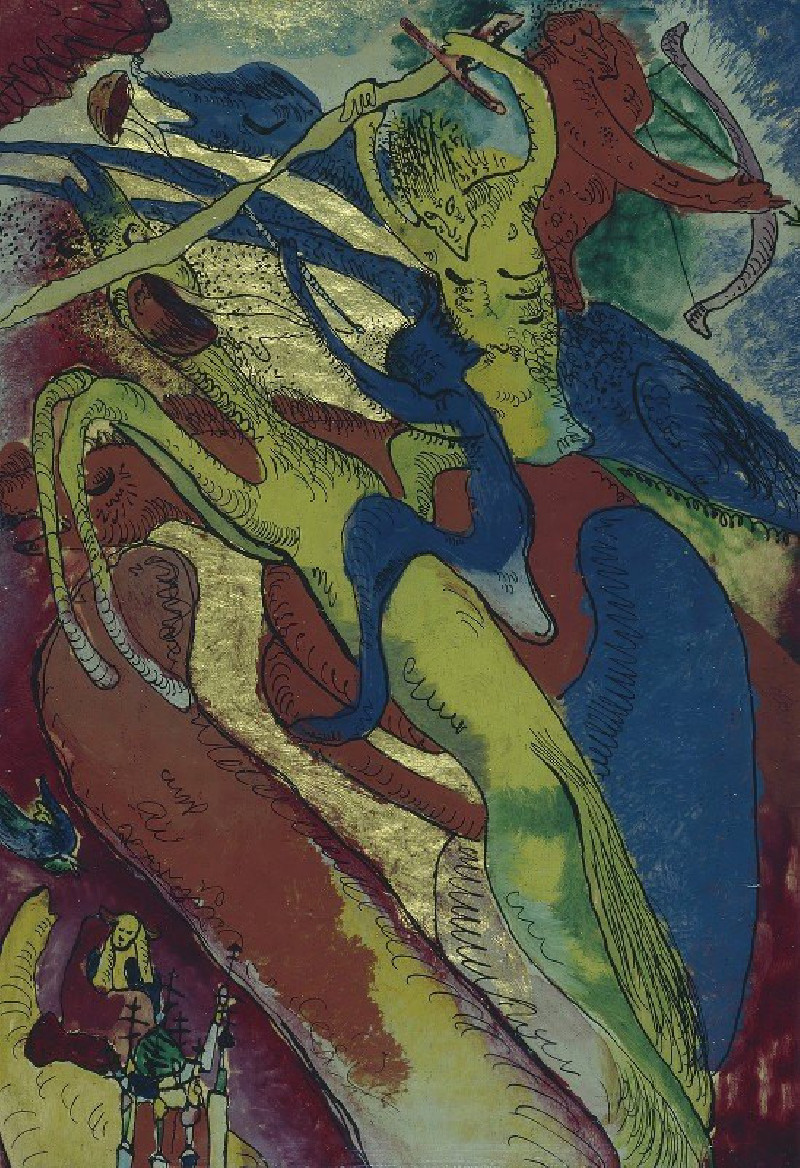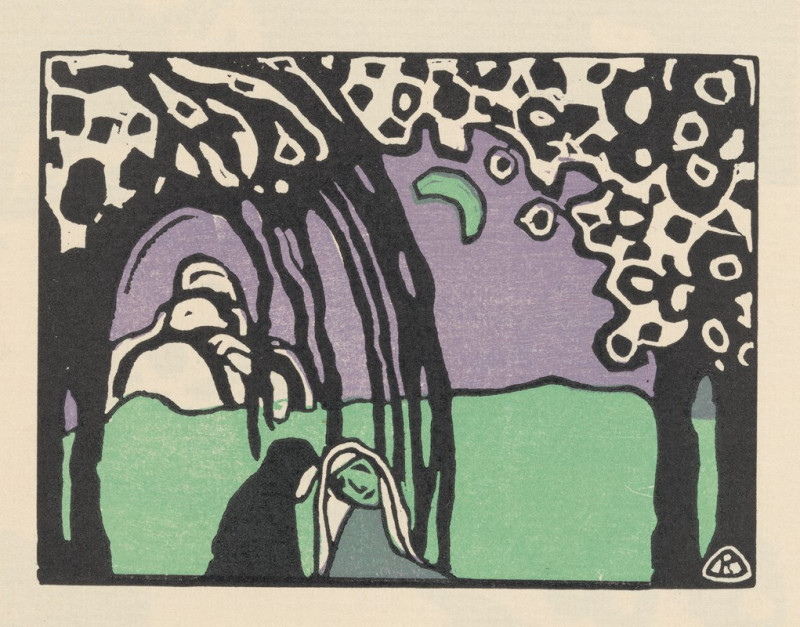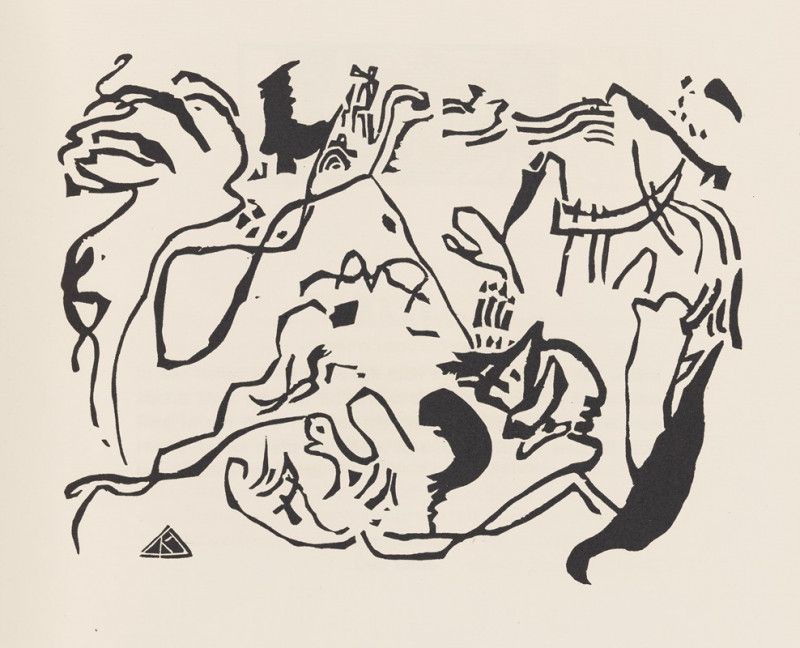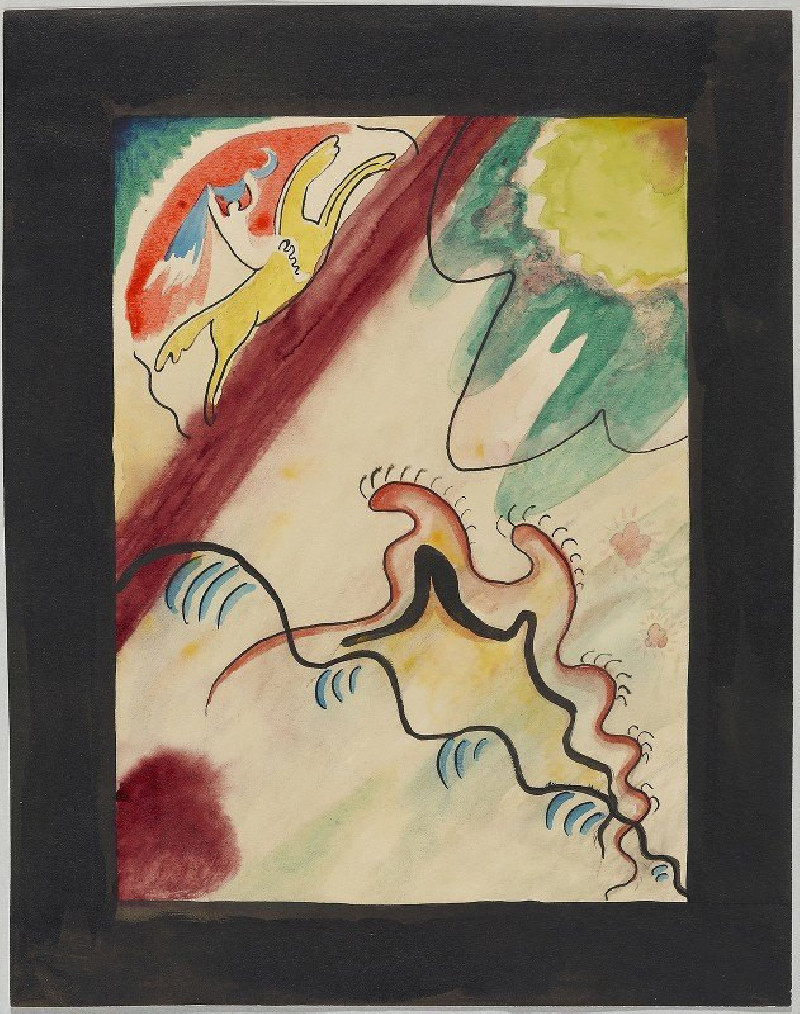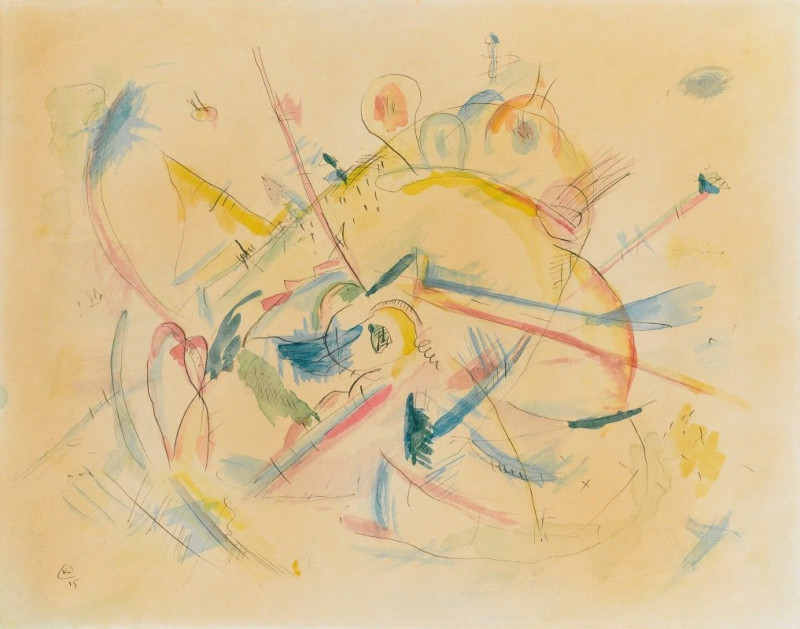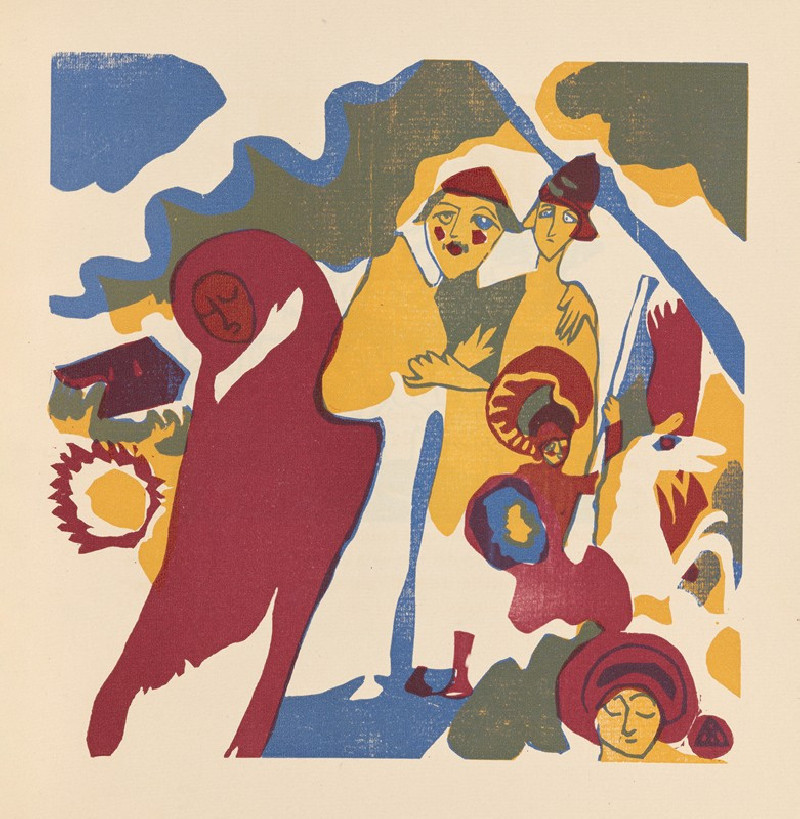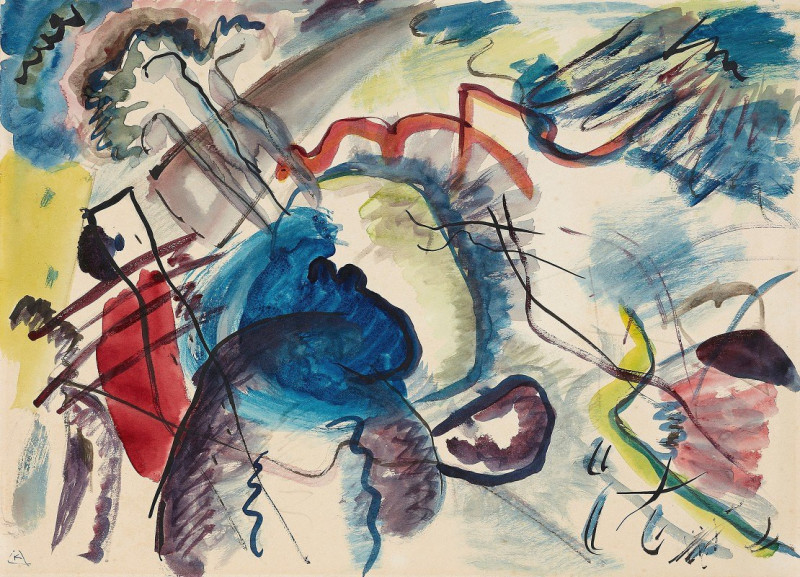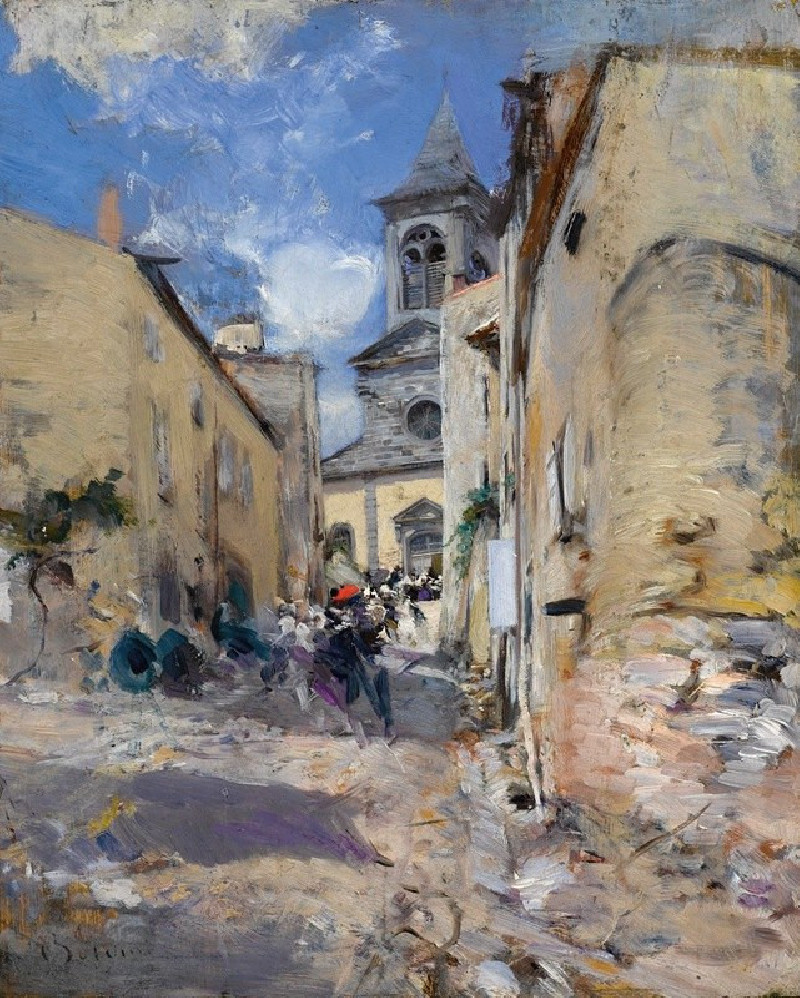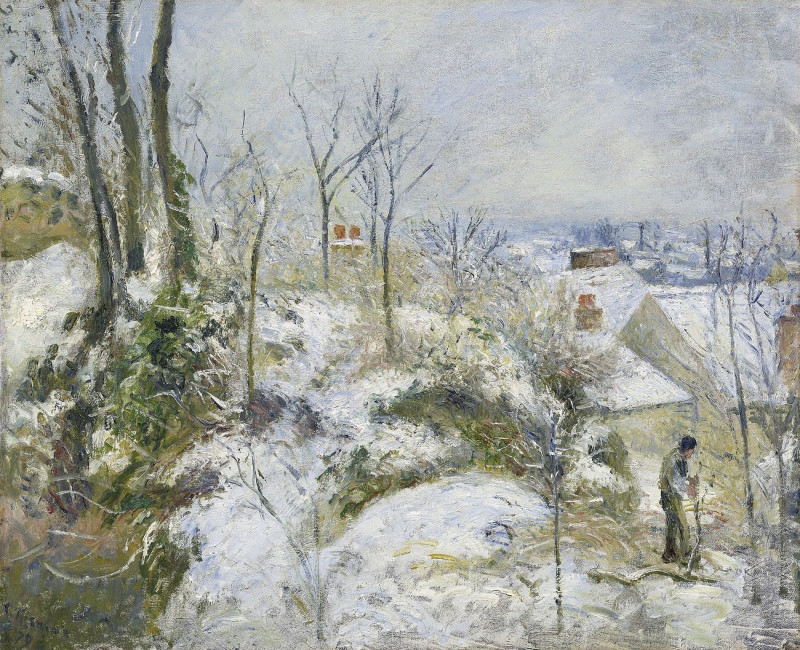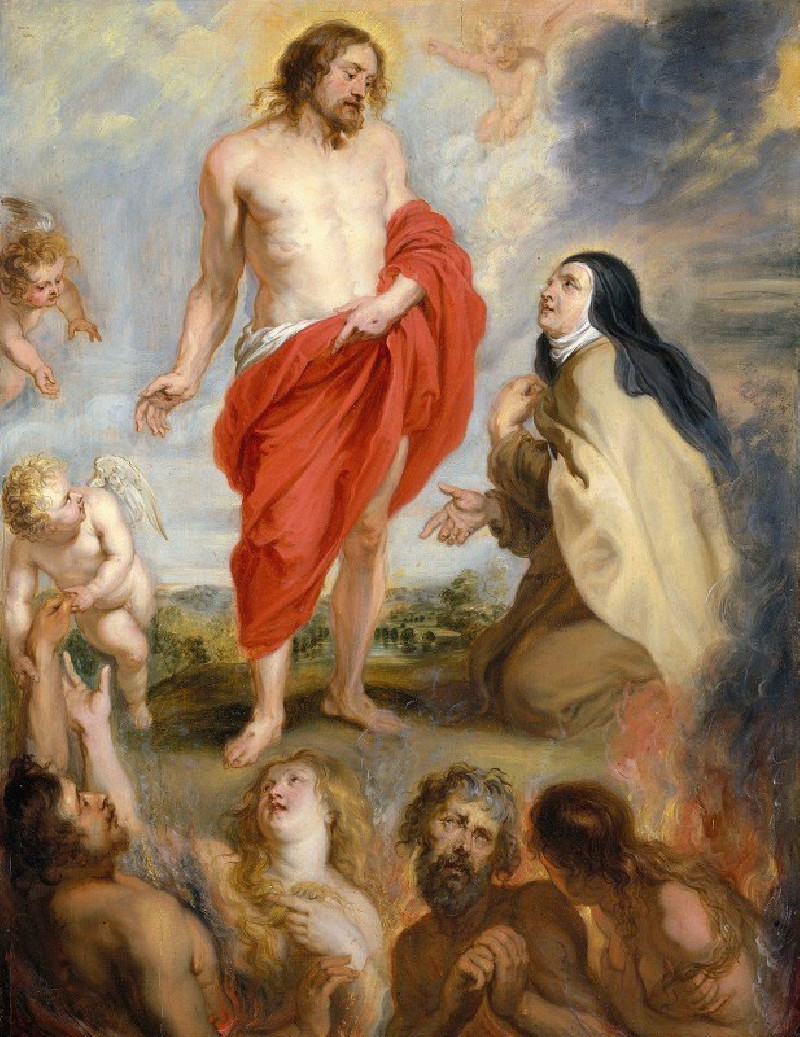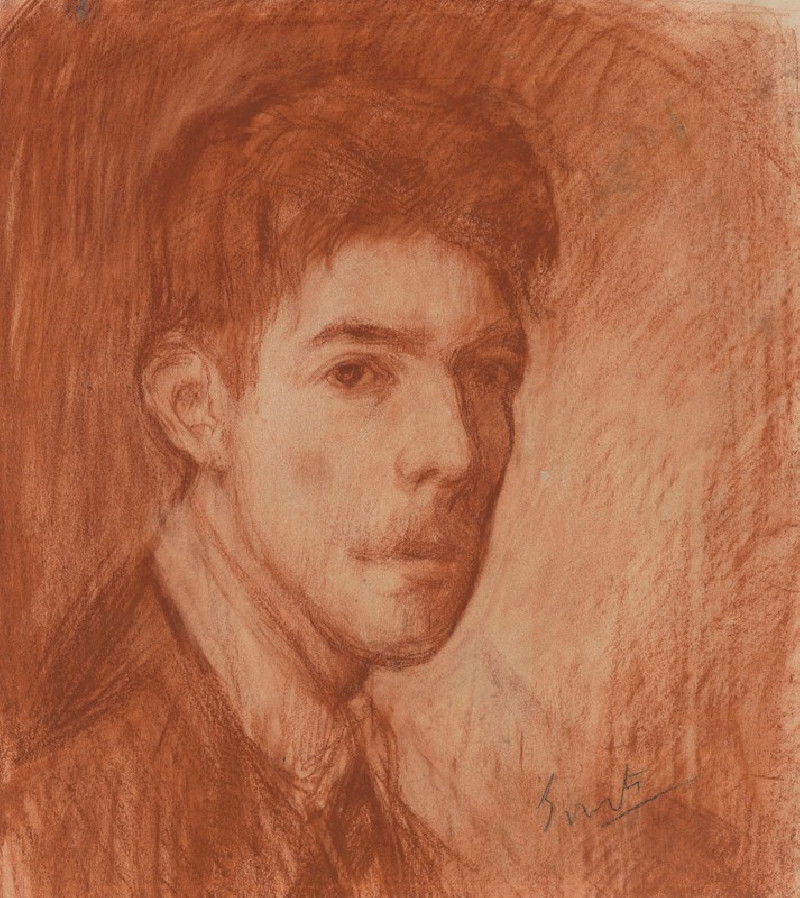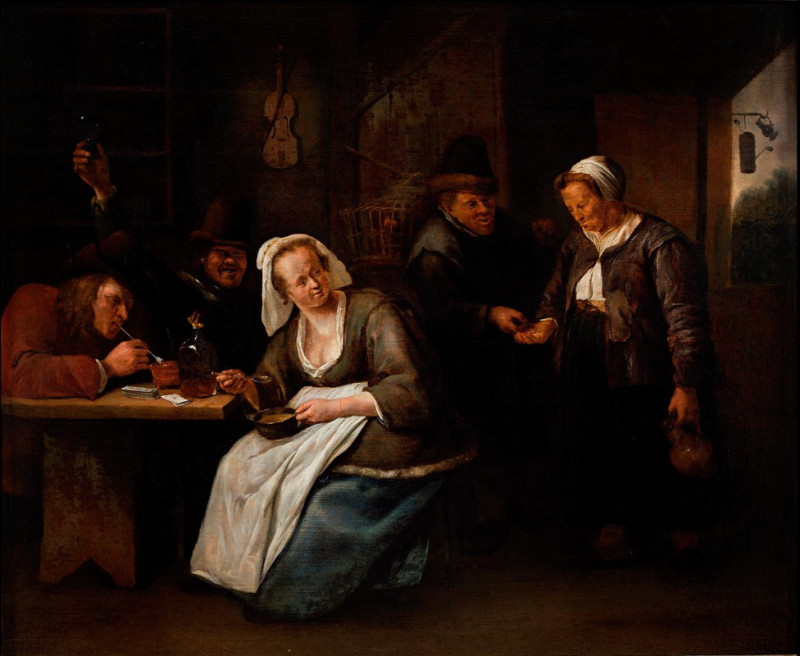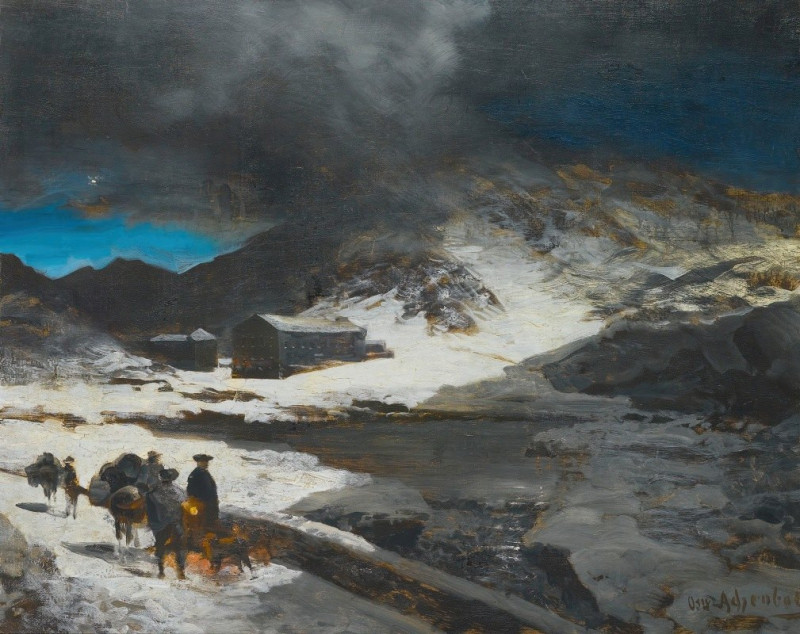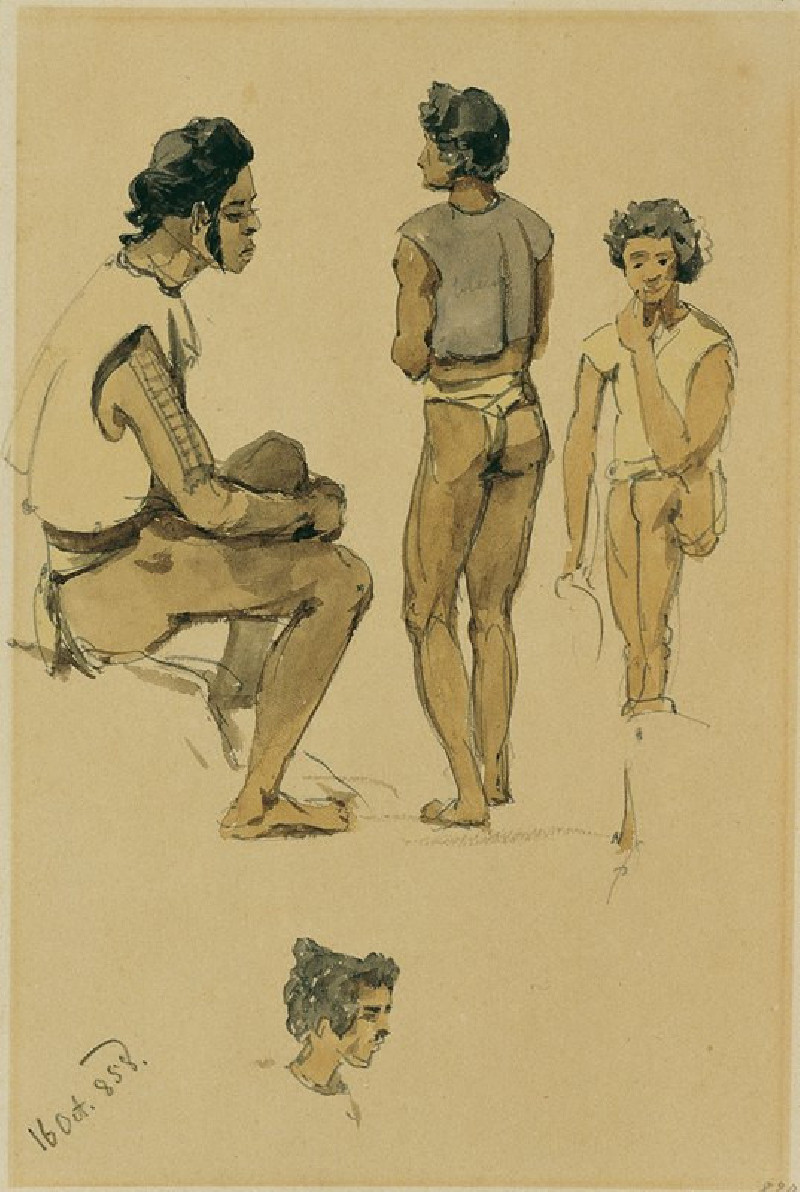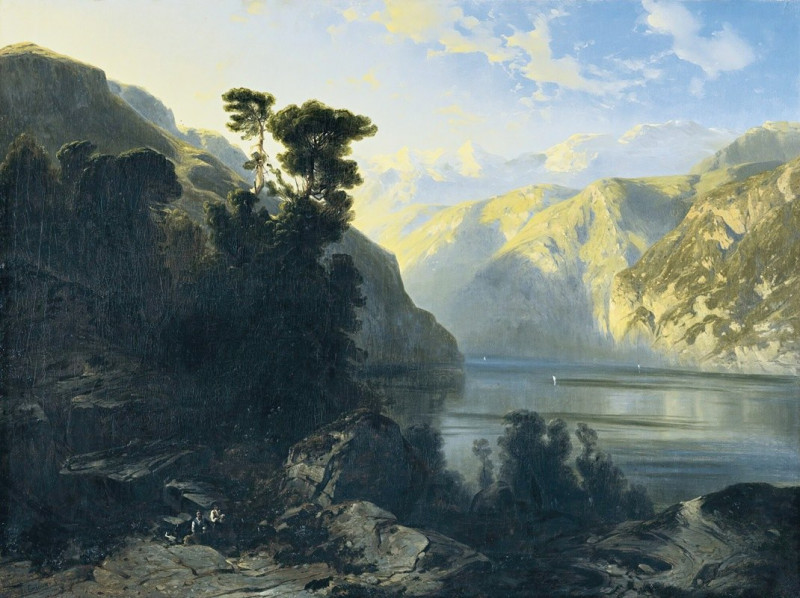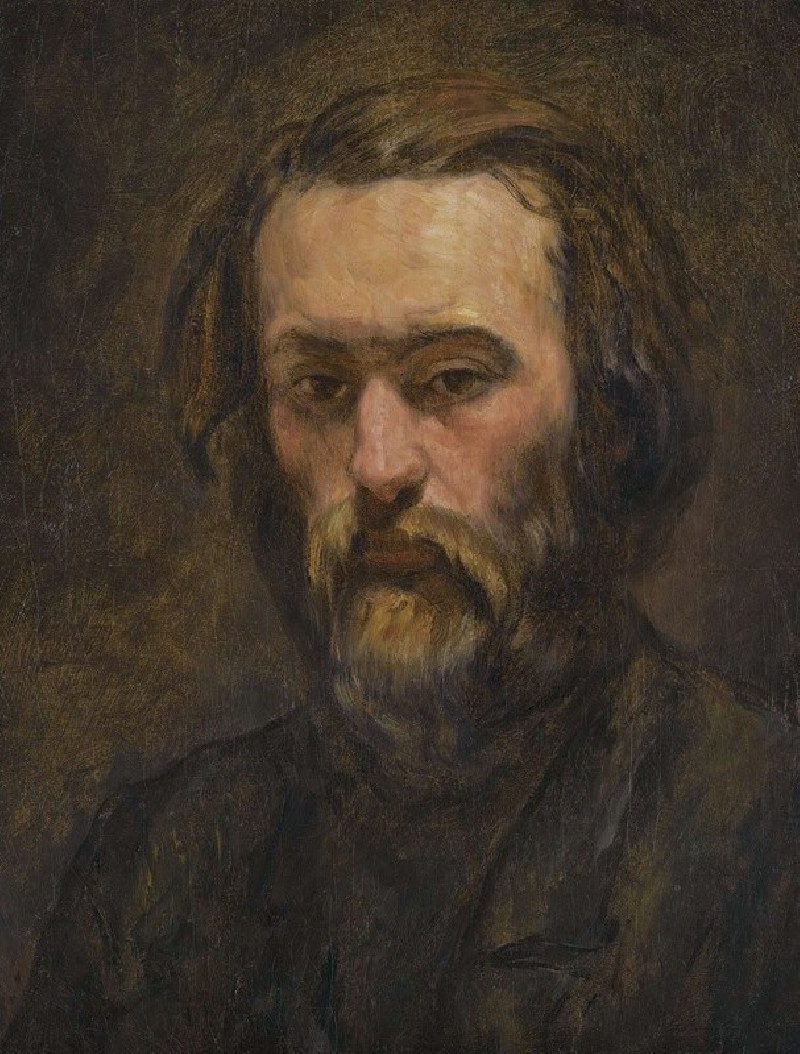Watercolour with Seven Strokes (1916)
Technique: Giclée quality print
Recommended by our customers
More about this artwork
This painting, "Watercolour with Seven Strokes" by Wassily Kandinsky in 1916, encapsulates the abstract and expressive use of color and form that defines much of Kandinsky’s pioneering work. The composition features a dynamic interaction of colors and lines, blending both geometric and organic shapes together in a seemingly spontaneous yet intricately balanced manner.The title suggests an emphasis on the simplicity and directness of seven strokes, which may guide the viewer's eye across the painting, searching for these key elements amid the swirl of activity. Kandinsky’s use of a diverse palette—including bold blues, vibrant yellows, and subtle earth tones—creates a visual vibrancy that seems to pulse with energy.Sharp black lines crisscross and contour through the space, adding a sense of motion and depth. These lines may intersect and border more softly painted shapes, which appear almost like ethereal forms or stains, contributing to the overall fluidity and dynamic range of the composition. The splatters and specks scatter across the canvas, suggesting spontaneity and perhaps the artist's interest in the interplay between control and chance in his work.Kandinsky, often viewed as a seminal figure in the development of abstract art, believed in the evocative interconnections between color, shape, and the spiritual resonance of art.
Delivery
Returns
Wassily Wassilyevich Kandinsky was a Russian painter and art theorist. Kandinsky is generally credited as the pioneer of abstract art. Born in Moscow, Kandinsky spent his childhood in Odessa, where he graduated at Grekov Odessa Art school. He enrolled at the University of Moscow, studying law and economics. Successful in his profession—he was offered a professorship (chair of Roman Law) at the University of Dorpat today Tartu, Estonia)—Kandinsky began painting studies (life-drawing, sketching and anatomy) at the age of 30.



